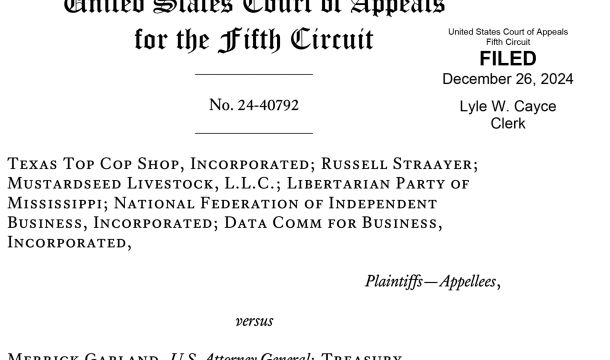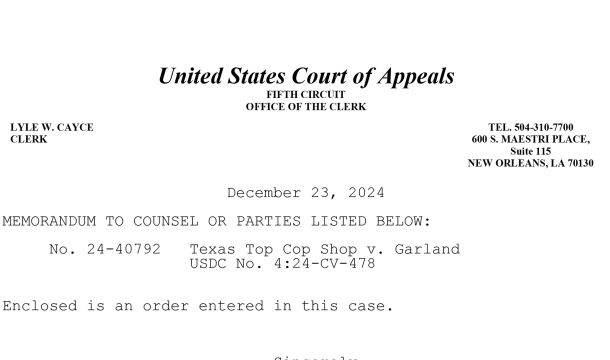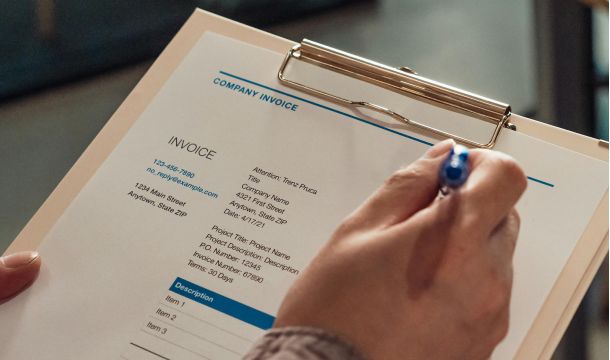The GovCon Bulletin™
Sweeping Final Rule Amends SBA Regulations, Part 1: HUBZone Program, Subcontracting Plans, Affiliation - Identity of Interest & Economic Dependence, Small Business Joint Ventures, Calculation of Annual Receipts, Recertification, & SBIR/STTR Programs
June 5, 2016
SBA Publishes Sweeping Amendments To SBA Regulations!
On May 31, 2016, the U.S. Small Business Administration (SBA) published a final rule amending SBA regulations in order to implement provisions of the National Defense Authorization Act of 2013 relating to performance requirements applicable to small business and socioeconomic program set-aside contracts and small business subcontracting. This final rule, which can be found here and becomes effective June 30, 2016, also amends SBA's regulations concerning the nonmanufacturer rule, affiliation rules, small business joint ventures and other matters. The changes are extensive and cover a significant number of issues. Consequently, we are summarizing those changes in three separate parts. Part 1, in this edition of The GovCon Bulletin,™ summarizes the changes to the HUBZone Program, Subcontracting Plans, Affiliation - Identity of Interest & Economic Dependence, Small Business Joint Ventures, Calculation of Annual Receipts, Recertification, & the SBIR/STTR Programs.
In Part 2, we will review the final rule's changes to the SBA regulations concerning the Limitations on Subcontracting. Part 3 will summarize the final rule's changes to the SBA's regulations on Procurement Center Representative Responsibilities, Size Protests, NAICS Appeals, Nonmanufacturer Rule, Adverse Impact and Construction Requirements, and the Certificate of Competency.
Mark Amadeo
HUBZone Program
In the final rule, SBA revised § 126.200(b)(6), which addresses the requirements that a concern must meet in order to receive SBA's certification as a qualified HUBZone small business concern. Since paragraphs (b)(6) and (d) were repetitive and addressed performance of work requirements, SBA deleted paragraph (d) and revised paragraph (b)(6) to state that the concern must represent in its application for the HUBZone program that it will comply with the applicable subcontracting limitations with respect to any award it receives as a HUBZone small business concern. SBA also revised § 126.700, which addresses the performance of work requirements for HUBZone contracts. SBA believes it is confusing to have each provision discussing an SBA set-aside to repeat the relevant subcontracting limitations so the SBA decided to list all subcontracting limitation requirements at § 125.6 and provide references to that section in each of the various small business government contracting and business development program sections. Accordingly, § 126.700 now simply refers to § 125.6 for the limitations on subcontracting requirements for HUBZone contracts. Indeed, SBA similarly revised § 127.504(b) and § 127.506(d), which address the performance of work requirements for EDWOSBs/WOSBs and EDWOSB/WOSB joint ventures, respectively, to state that those concerns must meet the limitations on subcontracting requirements under § 125.6.
Subcontracting Plans
The final rule revised § 125.3(f)(1) to incorporate the NDAA’s requirement that contracting agencies perform evaluations of a prime contractor's subcontracting plan performance and that SBA's evaluations of subcontracting plan performance are to be completed as a supplement to the contracting agency's review. SBA, in the final rule, also added a new § 125.3(f)(8) to incorporate the requirement under the NDAA that the head of the contracting agency ensure that the agency collects, reports, and reviews data on the extent to which the agency's contractors meet the goals and objectives set out in their subcontracting plans. SBA also revised § 125.3(f)(5) to state that a contractor that fails to provide a written corrective action plan after receiving a marginal or unsatisfactory rating for its subcontracting plan performance or that fails to make a good faith effort to comply with its subcontracting plan will not only be in material breach of the contract and subject to liquidated damages under the procedures in 48 CFR 19.705-7 and FAR clause 52.219-16, but such failure shall also be considered in any past performance evaluation of the contractor. SBA also added a new sentence to the end of § 125.3(f)(5), which now prescribes the process for a Commercial Market Representative (CMR) to report firms that are found to have acted fraudulently or in bad faith to the SBA's Area Director for the Office of Government Contracting Area Office where the firm is headquartered. SBA added new § 125.3(c)(8), which provides that if a small business is identified as a potential subcontractor in a proposal, offer, bid or subcontracting plan in connection with a covered Federal contract, the prime contractor must notify the small business in writing prior to such identification. SBA also added new § 125.3(c)(9), which establishes a reporting mechanism that allows potential subcontractors to report fraudulent activity or bad faith behavior by a prime contractor with respect to a subcontracting plan.
Affiliation – Identity of Interest & Economic Dependence
In the final rule, SBA amended § 121.103(f), which discusses the circumstances in which an identity of interest between two or more persons leads to affiliation among those persons so that their interests are aggregated. Specifically, the final rule divided paragraph (f) into two paragraphs. Paragraph (f)(1) clarifies that a presumption of affiliation exists for firms that conduct business with each other and are owned and controlled by persons who are married couples, parties to a civil union, parents and children, and siblings. This presumption may be overcome by showing a clear line of fracture between the concerns. In paragraph (f)(2), SBA adopted a presumption of affiliation based on economic dependence. Specifically, if a firm derives 70% or more of its revenue from another firm over the previous three fiscal years, SBA will presume that the one firm is economically dependent on the other and, therefore, that the two firms are affiliated. This presumption is rebuttable by a showing that despite the contractual relations with another concern, the concern at issue is not solely dependent on that other concern, such as when a firm is new or a start-up and has only received a few contracts or subcontracts. Notwithstanding this presumption of affiliation based on economic dependence, the SBA also acknowledged that the SBA rules clearly recognize that ANC, NHO, CDC, and Tribally-owned concerns will provide assistance to sister entities, and that it does not make sense to find affiliation based on economic dependence among such concerns. Consequently, paragraph (f)(2) also clarifies that SBA will not find affiliation between two concerns owned by an Indian Tribe, ANC, Native Hawaiian Organization (NHO) or Community Development Corporation (CDC) based solely on the contractual relations of the two concerns. The SBA provided examples in the regulatory text for further clarification.
Small Business Joint Ventures
Under the final rule, the SBA amended § 121.103(h) to allow two or more small businesses to joint venture for any procurement without being affiliated. The SBA regulations already exclude from affiliation an 8(a) protégé firm that joint ventures with its SBA-approved mentor. Before the final rule amendments, the SBA regulations also excluded from affiliation two or more small businesses that joint venture to perform a small business procurement, but only where the procurement was bundled or large (i.e., greater than half the size standard for a procurement assigned a NAICS code with a receipts-based size standard and greater than $10 million for a procurement assigned a NAICS code with an employee-based size standard). The final rule removes the restriction on the type of contract for which small businesses may joint venture without being affiliated for size determination purposes. The final rule also clarifies that with respect to joint ventures that perform contracts as similarly situated entities, a joint venture of two or more business concerns may submit an offer as a small business for a Federal procurement, subcontract or sale so long as each concern is small under the size standard corresponding to the NAICS code assigned to the contract.
Calculation of Annual Receipts
SBA amended § 121.104, which explains how SBA calculates annual receipts when determining the size of a business concern. It was always SBA's intent to include all income, except for listed exclusions; however, SBA found that some business concerns misinterpreted the current definition of receipts to exclude passive income. Consequently, SBA’s change clarifies that the calculation of receipts includes all income, including passive income, and that the only exclusions from income are the ones specifically listed in paragraph (a).
Recertification
SBA amended § 121.404(g)(2)(ii) by adding new paragraph (D) to clarify when recertification of size is required following the merger or acquisition of a firm that submitted an offer as a small business concern. Paragraph (D) clarifies that if the merger or acquisition occurs after offer but prior to award, the offeror must recertify its size to the contracting officer prior to award.
Small Business Innovation Research and Small Business Technology Transfer Programs
Section 121.702(a) of the SBA regulations establishes the SBIR program eligibility requirements related to ownership and control. Awardees that satisfy any of the permissible ownership and control structures discussed in § 121.702(a) must also satisfy all of the size and affiliation requirements stated in § 121.702(c). Section 121.702(a)(1)(ii) allows an SBIR awardee to be majority-owned by multiple venture capital operating companies (VCOCs), hedge funds, or private equity firms. Section 121.702(a)(2) prohibits ownership by a single VCOC, hedge fund, or private equity firm that owns a majority of the concern. This paragraph has been misread because it does not account for the scenario where an awardee is majority-owned by a single VCOC, hedge fund, or private equity firm that is itself another small business concern and therefore qualifies as an allowable ownership structure under § 121.702(a)(1)(i). Consequently, in the final rule, the SBA amended § 121.702(a)(2) to clarify that a single venture capital operating company (VCOC), hedge fund, or private equity firm may own more than 50% of an SBIR awardee if that single VCOC, hedge fund, or private equity firm meets the definition of a small business concern and is more than 50% directly owned and controlled by individuals who are citizens or permanent resident aliens of the United States.



